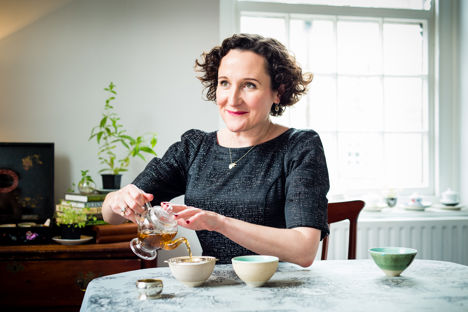
How to make the perfect cup of tea
Most of us know our way around a teabag, but preparing a pot of leaf tea is a completely different art form. Henrietta Lovell, also known as the Rare Tea Lady, shares her top tips for mastering the perfect cup of tea.
How to make the perfect cup of tea
Most of us know our way around a teabag, but preparing a pot of leaf tea is a completely different art form. Henrietta Lovell, also known as the Rare Tea Lady, shares her top tips for mastering the perfect cup of tea.
Tea really is a multi-faceted gem. It is so very versatile, not only in the many different types of tea but also in the many possible infusions of the same tea leaves. We are often so used to builders’ tea bags that leaf teas can be a little baffling in their diversity and are considered daunting to prepare. In this series of articles, I will briefly explore the spectrum of teas from white through green to black – but first let me demystify the making of a cup of tea.
If you are using a tea bag, carry on doing exactly what you are doing. Industrially processed teas need boiling water and long steeping to bring out the flavour. Short infusion and lower temperatures will give you grey, tasteless water.
Hand-crafted leaf tea is an altogether more delicious undertaking. It’s like comparing a fish to a fish finger or a fillet of beef to a frozen hamburger. They need more precise cooking but are so much more rewarding.
Making good tea is a little like making a cake; you need to follow a recipe not just mix together some flour, butter and a few eggs and throw them all in the oven for an unspecified amount of time at any old temperature. There are three main criteria to pay attention to. Once you have mastered these, you can explore each tea in all its complexity and enjoy each one just the way you like it. The temperatures and times I have suggested are just guides. You are in control. And the way you like it is right.
Leaf to water ratio
I recommend 2–3g of leaves per teacup (150ml). This is roughly one teaspoon of broken, black tea or a dessert spoon of whole leaf teas which are lighter and more bulky.
A good rule of thumb is that if you like stronger tea use more tea but do not infuse longer. Over time it will just become more bitter – the really interesting flavours will not intensify.
Water temperature
The amino acids in hand-crafted leaf tea that give it flavour, dissolve at different temperatures (not so in teabags where a great deal of the decent flavours are destroyed in the industrial processing).
White and green teas work better at lower temperatures – around 70°C – to bring out their delicate sweetness.
Black teas are best with water at 80°C if you drink them without milk or 90°C with milk. Like a deep and rich red wine, you want to taste the tannins that dissolve in hotter water. The hotter the water the more tannic the tea. Boiling water is really only best for tea bags.
Unless you are making a herbal infusion – peppermint, lemongrass and rooibos need boiling water to bring out their top notes.
With this in mind, I would recommend investing in a temperature-controlled kettle. There is a very decent Bosch one at under £50. Or you can add a little cold water to tea leaves in the pot before adding the boiling water – add one shot (25ml) of cold water per cup of black tea and a double (50ml) for green. This will reduce the temperature.
Infusion time
This really depends on how you like your tea. The longer you leave tea to brew, the stronger and more tannic it will become. As a general rule, one minute for a light infusion, two minutes for a strong infusion and three for a very strong infusion.
Once at your desired strength, drain every last drop from the pot so that the leaves don’t continue to infuse. This is called ‘The Golden Drop’ which has the most flavour. When you are ready for your second cup, just re-infuse the tea leaves with fresh water. Often the second cup is even more delicious than the first. Some teas will infuse many times.


